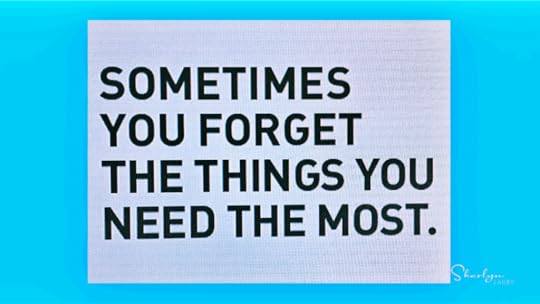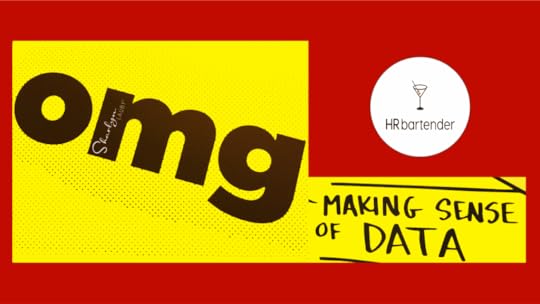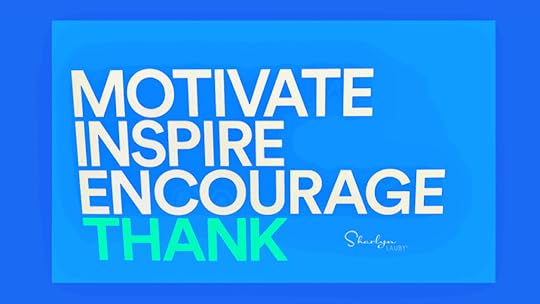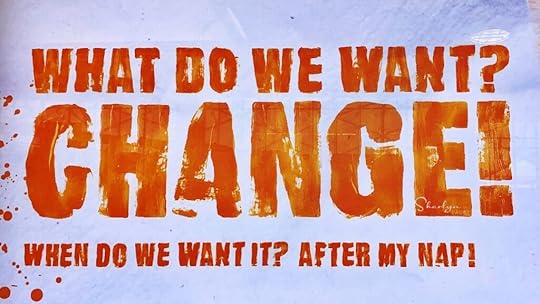Sharlyn J. Lauby's Blog, page 6
July 8, 2025
Bookmark This! The Employee Skill Development Edition

Estimated reading time: 4 minutes
According to a report from McKinsey, 92% of organizations plan to invest more in artificial intelligence (AI) over the next three years. Honestly, this isn’t surprising. Organizations have been talking about transitioning to more AI driven activities.
With this shift to more AI, organizations will also want to provide upskilling and reskilling opportunities to employees. And frankly, if the organization isn’t providing these skill development opportunities, then employees might want to search them out on their own.
I recently published an article about the “10 Work Skills Every Recruiter Wants to See” and wanted to share a few other skill development articles that might be helpful as well.
Use SMART Plans to Create Actionable Goals
One of the things that frustrates me is when the speakers present a topic and, in the final couple of minutes of the session, they say something to the effect of “…and I challenge each of you to leave this session and create your own personal action plan to…” do whatever is that they’re suggesting we do. As a result, I’ve learned that every time a speaker issues one of these challenges I should try to work it into a SMART plan.
Having Media Literacy Is a Business Competency
As businesspeople, we spend a lot of time on the internet. We use articles and reports from the internet in our presentations and proposals. We share content on our social media accounts. We comment on what people write on their blogs, etc. It’s important that we’re responsible media publishers which means as individuals, we must learn how to be media literate.
10 Public Speaking Tips for Your Next Business Presentation
The best way to learn public speaking is by doing it more. It’s one of those things that gets easier with frequency. And being a little nervous is okay. It’s about focusing on being comfortable with the room so you can showcase your expertise and knowledge.
5 Business Lessons Learned Using a Hobonichi Techo Planner
Planning is an important activity. As individuals, we make plans for our personal and professional lives. Organizations make strategic and operational plans. Our plans help us succeed. Spend time understanding how to plan. Thinking about how we like to plan and what works for us isn’t a frivolous exercise. It’s an investment into our future.
Employee Productivity Means Having a Healthy Relationship with Technology
Technology is an important part of our personal and professional lives. There are wonderful technology tools that can help us save time and money. Technology can give us access to information we wouldn’t get otherwise. So, let’s give technology the appropriate accolades. That being said, it doesn’t mean we need to be on technology 24/7/365 to realize it’s value.
Celebrate Your Successes Through Micro Victories
Micro-victories or micro-celebrations are a great way for individuals, teams, and organizations to recognize their successes, stay focused on the big picture, and keep motivation at a high level. Because all those little steps will be what creates the “next BIG thing” in the organization.
No matter what your job title is, we should all be thinking about developing new skills to stay relevant in today’s business world. The way to do that is by:
Setting goalsUsing business information to support your planCommunicating what you need to accomplish your goalsMonitoring your progress towards completing those goals, whether it’s on paper or digitallyAnd celebrating your successes along the wayNot only is this something we can do for ourselves, but we can encourage others to do the same. Business isn’t going to slow down, and we need to be ready for what’s next.
Image captured by Sharlyn Lauby while exploring the streets of San Francisco, CA
The post Bookmark This! The Employee Skill Development Edition appeared first on hr bartender.
July 3, 2025
Improve Performance of Project Teams Using the RACI Model

Estimated reading time: 3 minutes
Regular readers of HR Bartender know I’m a big believer in accountability. I also believe responsibility and authority go hand in hand. If you’re responsible for a task or project, then you should have the authority to make things happen. Especially since you’re going to be held accountable for the results.
Several years ago, at a conference in London, I learned about the RACI model which stands for who is Responsible, who is Accountable, who should Consult and who should Inform. RACI is a term often used in project management to assign responsibilities and according to Wikipedia, here’s how the individual roles are defined.
Responsible represents the people who are doing the actual work. I understand not everyone involved with a project is hands-on, so I’m assuming this is focused on the hands-on, in the trenches work that needs to be done. I’d also like to think that being responsible for the work doesn’t absolve you from being held accountable for completing the work.
Accountability in this RACI context means the person who ultimately will be labeled a success or failure based upon the outcome of the project. It might be the project manager or the person who championed the project in the first place. They also may or may not be doing some of the hands-on work.
Consult (or Counsel) are the subject matter experts (SMEs) whose expertise is needed to complete the project. Depending upon the project scope, they might have a regular role within the project team or maybe they are consulted if a specific problem occurs. I could also see this role not being confined to internal resources. Maybe the SME is an external consultant or contractor.
Inform includes the person(s) who are sponsoring the project. Traditionally, every project has a sponsor that helps the team obtain resources and buy-in. The sponsors must be kept in the loop about the project status. Often this can be done with written reports and occasional one-on-one meetings, but it’s a critical piece of project management.
The RACI model intrigued me because I wonder how many teams actually spend time discussing roles as part of a project plan. I don’t recall ever being on a team where we had a deliberate conversation about this. And I wonder if teams spent more time on this aspect, if it would help the group reach their goals faster and with fewer setbacks. Each person knows their role, can operate effectively, and conflict is reduced.
Business professionals can benefit from project management tools in their daily interactions. Models like RACI can add a level of clarity to the project…and to the outcome. Maybe it’s time for business pros to start reading project management blogs and keeping a PM book on the bookshelf. It could come in handy.
Image captured by Sharlyn Lauby while exploring the streets of Washington, DC
The post Improve Performance of Project Teams Using the RACI Model appeared first on hr bartender.
July 1, 2025
Be a Good Meeting Participant

Estimated reading time: 4 minutes
We spend a lot of time in meetings. I don’t know the exact number of hours. I’ve seen statistics ranging from 3 hours a week all the way up to 23 hours a week. Regardless, it’s a lot.
Of course, it feels even longer when the meeting could have just been an email. Or when the person leading the meeting is doing a poor job of it. Organizations should put an emphasis on providing training to people who will be asked to lead a meeting. One of the nicest compliments you can get is “That was an excellent meeting!”.
But I don’t want to talk about leading meetings today. Except from the standpoint that when someone leads a meeting well, it helps with participation. Which is the whole purpose of a meeting. Otherwise, you’re just talking at people.
Participants have a role in the meeting. It could be beneficial to think about how to be a good meeting participant.
Do your prework. Participants should review the meeting agenda and think about those topics that they want to discuss. This isn’t about adding new items to the agenda. (Side note: If you do want to add something, the time to do that is before the meeting starts.) But if there’s something on the agenda that you need to think about or some information you want to gather prior to the meeting … this is the time to do it. Come to the meeting prepared.
If you need something, say something. If you didn’t get an agenda, ask for one. If the agenda mentions materials and you can’t access them, ask. If you need to step away during the meeting, let the meeting leader know. Ideally, it’s best to share this information prior to the meeting so if you need to do some prework (see above) then you have time.
Give the meeting your attention. I’m starting to see this a lot with online meetings. People who are physically at the meeting but mentally might be somewhere else. I understand that stuff comes up and distractions happen. See if there’s a way to put those aside for the meeting. One simple thing could be going “camera off” when you’re dealing with other stuff and then “camera on” when you’re back. True story – I was in a meeting recently where someone took a call during the meeting. And everyone could see it. I know, stuff happens, but I’m not sure it came across the way the participant or presenter wanted it to.
Learn your equipment. This one is specifically for online meetings. We’ve been using Zoom, Microsoft Teams, and other platforms for some time now. I think there’s a level of expectation that participants know how to mute and unmute themselves. I’m not talking about the occasional “you’re on mute” incident. I’ve seen an increase in people attending meetings while driving, leaving their speaker unmuted, and hearing all the background noise while trying to participate in a meeting.
Take notes! While good meetings produce good meeting minutes, it can be helpful to jot down some notes for context. Maybe the meeting jogged your memory about something you want to research once you’re back at your desk. And if you do remember something personal – like don’t forget to pick up some chicken on the way home – then write yourself a quick reminder and shift focus back to the meeting.
I know this might sound like grumbling and in some cases, it is. But it does make me wonder when business leaders say things like, “We need to all be in the office for better communication.”, how much of that is because of poor meetings – on the part of both the leader and the participant?
Business meetings aren’t going away so we need to make them better. Meeting leaders need to call meetings for the right reasons and conduct good sessions. Participants need to show up and participate at a high level.
The post Be a Good Meeting Participant appeared first on hr bartender.
June 29, 2025
Organizational and Individual Values Should Be in Alignment

Estimated reading time: 3 minutes
Someone posted on LinkedIn recently that hiring for values contributes to ageism. Since then, I’ve been thinking about this comment and what it means.
First, I’m not naïve. I understand ageism exists. Ageism refers to how we think, feel, and act towards others based on their age. We might be tempted to think of ageism only in terms of older people, but ageism happens to younger people too. An example might be saying “young people don’t want to work”. Honestly, it’s one of the reasons that I try not to get involved in the “generational” conversations. I think conversation like Millennials think this … and Boomers think that … contribute to the age discussion and not in a positive way.
But back to the original comment about hiring for values contributing to ageism. The word values means “something considered to be important or beneficial”. We know that organizations have values. So do individuals.
When it comes to organizational values, I found an article on the MIT Sloan Management Review that said they researched almost 700 large U.S. based companies and the top three values listed on their websites were 1) integrity, 2) respect, and 3) innovation. If this information is true, then the LinkedIn comment doesn’t necessarily align. Because that would mean that hiring for integrity, respect, and innovation contributes to ageism. And I’m not sure that integrity, respect, and innovation are exclusive to a particular age group.
In addition to organizations having values, individuals have values. Personal values are … well, they’re personal so they will vary by individual. Brene Brown has a downloadable list of values on her website including some guidance on how to identify the values you most want to align with. For example, the list includes integrity, respect, and creativity. So, it’s possible for individuals to have the same or very similar values as company values. Again, I’m not sure that integrity, respect, and creativity are exclusive to a particular age.
I did one last thing trying to understand more about the relationship between values and age. Yep, I did an internet search and asked AI. The results I received said young people prioritize achievement, career, and family and older people prioritize tradition, security, and benevolence. Again, I think there are older people who place value on family, career, and achievements and younger people who want security, tradition, and benevolence. It’s another example of trying to put people in boxes based on age.
However, in this very long conversation about values, it reminded me of something that I could see being important to both organizations and individuals. Which is that values should be in alignment. And not just the words, but actions. A company might say that respect is a value, but the candidate isn’t treated with respect when they show up for the interview. That could be a red flag for a candidate. Or a company asks a candidate about a time when they had to use creativity to solve a problem during the interview … and the candidate doesn’t have an answer. That might impact the interview.
Organizations often ask candidates job interview questions to see if their values are in alignment. Candidates and employees look to see that an organization’s actions match the values on their website. Neither should make assumptions about a person’s values based on their age. It’s about their actions.
Image captured by Sharlyn Lauby after speaking at the SHRM Annual Conference in Las Vegas, NV
The post Organizational and Individual Values Should Be in Alignment appeared first on hr bartender.
June 26, 2025
The 4 Levels of Succession Planning

Estimated reading time: 3 minutes
I’ve been noticing several of my LinkedIn connections are transitioning to new jobs. That’s great. Everyone should follow their career goals.
When people are moving to new opportunities – whether those are internal or external – it’s a good time to focus on succession planning. Organizations should be thinking about the future. More specifically, organizations should be thinking about the people who might be able to move into future jobs.
However, all succession planning related activities are not the same. I think the reason that some organizations shy away from succession planning is because they don’t want to tell someone, “Leonard, we think you’re our next CFO.” They don’t want to make that level of commitment. I get it. But the company should still do something. So here are some succession planning activities to consider.
Replacement planning is the exercise of saying, “If our CFO quits, retires, etc., who will replace them?” The people involved in replacement planning are often already in the department and have some experience.That’s not to say they wouldn’t need some training, but they could relatively easily transition into the role. If the organization doesn’t have anyone who could do it, this might be cause for concern. Internal talent pools are groups of high performing and high potential employees that the organization wants to consider for future opportunities. The challenge could be that the future opportunity isn’t clearly identified yet. In the meantime, the organization can develop the group through training and special projects. It sends the message that the organization values the employee. And the skills being developed can be used now and in the future.Succession planning is the formal process of identifying an individual and the role they would be transitioning into. The organization and the individual are committed to actively developing the knowledge, skills, and abilities to be ready when the time comes. An example of succession planning could be the CEO who decides they are retiring and is working with the COO to transition responsibilities prior to their departure. Knowledge management (KM) is the process of identifying, creating, organizing, and sharing organizational knowledge. I’m putting KM here because there are times when an individual might leave and the organization isn’t planning to replace them. Maybe their role will be assumed by artificial intelligence (AI), or their individual tasks will be distributed around the organization, or the role will be outsourced, or a combination of these. Organizations will want to have a formal KM plan in place, so the knowledge isn’t lost.When it comes to succession planning, organizations have to think about the people, the work, and the knowledge. All three are equally important for business success.
As we’re starting to think about the rest of the year … and start planning for next year, having a conversation about succession planning should be a part of the talent strategy. Yes, companies need to think about workforce planning and staffing plans too. It’s all related. Human resources professionals can proactively offer solutions when they’re a part of the conversation about the future talent in the organization.
Image captured by Sharlyn Lauby while exploring the streets of Washington, DC
The post The 4 Levels of Succession Planning appeared first on hr bartender.
June 24, 2025
5 Things to Consider When Your Budget Gets Cut

Estimated reading time: 4 minutes
Budgets get cut. It’s a fact of business. And not just when sales are down. Sometimes the organization might decide to reallocate resources to take advantage of an opportunity that will ultimately yield them more later. Mr. Bartender and I faced this situation recently. The company we use for computer backups is moving from a monthly subscription to an annual subscription. They’re offering big discounts to sign up now. We hadn’t originally budgeted for this, but the discounts are substantial. So, we’re going to reallocate resources to take advantage of the deal, which will ultimately save us a lot.
So, when you’re facing budget constraints, what can you do to ensure quality? Here are five things to consider:
Are there places in the budget where the resources are abundant? Sometimes organizations intentionally put extra funding in budget lines (aka “sandbagging the budget”). We’re not going to debate this concept today, but if your organization does this, it could be a perfect time to go looking for the excess funds. And even if your organization doesn’t actually sandbag the budget, it’s possible they can postpone doing something and move those funds to another area. Where are you facing the constraints? Let’s say you’re working on a training project and budgeted to hire a consultant to help with instructional design. Now that the budget has been reduced, maybe you can’t hire a consultant to do the design, but you can do the work in-house. Or maybe you can hire the consultant, but only for the assessment and you’ll have to do the rest. The point being, if you know where the constraints are, you might be able to think of ways to still get the work done within budget. Is taking more time an option? This is kinda related to the last item about constraints. Sometimes when budgets are cut, the organization also changes the timeline for the project. And having more time can make up for losing financial resources. Using the example above with the training project, let’s say the company cuts the budget but says that instead of launching the training program in Q2, you can launch it in Q4. The extra time allows you to do the work in-house. Can you alter the plan? Sometimes when budget dollars are cut, the overall goals of an activity are cut as well. An organization might have planned to do a full-day classroom training on a topic and now with budget cuts, the plan is a half-day classroom training with two individual coaching sessions. The training is still going to happen, but the plan is going to change. Sometimes being flexible can save the organization money and still deliver quality. What do employees think? I intentionally saved this one for last but not because it’s the last thing to consider. Rather, I wanted to end with a possible place to start. Employees are smart. They often know where the organization can save money … and where they might be able to generate revenue. Before resigning yourself that a project or activity is cancelled due to budget cuts, think about challenging employees to come up with a solution.I know I’ve told this story before but it’s worth repeating. I once worked at a company that was facing a $1M shortfall. Instead of immediately cutting things out of the budget, they went to employees, told them the situation, and proposed an idea: What can we do that will either save the company money or generate more revenue? And if it works … we’ll give you a cut of the profit / savings. Employees came up with fantastic ideas. Not only did the company find the $1M shortfall … but several million more.
The best companies are faced with moments when they have to cut budgets and reallocate resources. Yes, these moments are frustrating. They can also be opportunities to challenge our creativity and find new ways to get things done.
Image captured by Sharlyn Lauby while exploring the streets of Gainesville, FL
The post 5 Things to Consider When Your Budget Gets Cut appeared first on hr bartender.
June 22, 2025
The 2 Types of Negotiations and Why It’s Smart to Plan Ahead

Estimated reading time: 4 minutes
We regularly negotiate. Maybe we don’t like to think of it as negotiation, but we do negotiate. The definition of negotiation is to “find a way over or through an obstacle”.
In our business lives, we negotiate salary and benefits. We might negotiate our schedule. There could be times when we negotiate training, like “I would like to attend this seminar, but I know it’s not in the budget right now, could I plan to attend next quarter?” We might negotiate vacation. For example, “I’d like to take a vacation in August, is there a time that works best for the team?”
We also negotiate in our personal lives. For example, what to watch like “I’ll watch Hacks with you if you watch Murderbot with me.” Maybe you negotiate dinner. “Let’s have tatchos at home tonight and we can go out for pizza on Friday.”
When we’re faced with a challenge, it could be helpful to think of it in terms of a negotiation. There are two types of negotiations: positional and principled.
A positional negotiation, sometimes referred to as an adversarial negotiation, is when a gain by one side usually means a loss for the other. Typically, there’s not any common ground or discussions of a win-win. A positional negotiation is focused on winning. An example of a positional negotiation is when you’re negotiating a price. As one person is trying to get a higher price for their product or service, the other person is paying more.
A principled or integrative negotiation is focused on the interests and goals of each side. The discussions are trying to create wins for each side, so the parties work together to find common ground. A typical example of a principled negotiation happens during labor contract discussions. Two items that are always discussed are the length of the contract and the pay increases that will occur during the contract. The union might want a shorter contract with higher increases, so they can negotiate more often for their members. The company might want a longer contract with smaller increases, so they negotiate less. With principled negotiation the sides work together to find a solution everyone can live with.
Organizations and individuals should be aware of when negotiating opportunities present themselves and think about how they want to enter the negotiation. There could be times when taking a position is the right approach and others when a principled approach would yield better results.
Entering a negotiation with the wrong strategy can create two outcomes that will not work for anyone. First, it’s possible that starting a negotiation off wrong could lead to no result at all. An example might be a consultant who takes a positional approach on an opportunity with a client that’s looking for a principled negotiation. The result? The consultant walks away from the deal. Second, if the parties don’t do their homework prior to starting discussions, they could both walk away feeling that they lost. An example could be when the company and union work out a deal, only to have union members vote it down in favor of a labor strike.
So, the next time you’re faced with a negotiation, consider whether a win-win is possible and what trade-offs might be made. If you’re in doubt about what the other side wants, do some research. Don’t assume that the other side has the same needs and wants as you. Come prepared with your list of trade-offs that you can discuss. It is possible to negotiate and win. But it takes planning and preparation.
Image captured by Sharlyn Lauby while exploring the Wynwood Art District in Miami, FL
The post The 2 Types of Negotiations and Why It’s Smart to Plan Ahead appeared first on hr bartender.
June 19, 2025
How to Create a Training Session Quickly

Estimated reading time: 5 minutes
There have been times in my experience that when the organization approved training, I needed to react quickly. If designing a training session started to take too long, well … I would get questioned about it. You know, “Why is this taking so long?” or “I thought you said this training was important. If it’s so important, why isn’t it happening?” So not only is it necessary to design good training, but it’s important to do it quickly.
For training to be effective, it must be delivered properly. This is where learning often gets a bad rap. Simply telling someone something isn’t learning. At best, it’s a conversation. At worst, it’s a directive. Here’s a five-step training model that organizations can use when they need to design employee training quickly. This can be used by human resources or operational managers. And it can be used for any size audience.
STEP 1: Introduction and WIFFM
The principles of adult learning say that adults respond positively to learning when they understand why the topic is important to them. The key word being “them”. That doesn’t mean that sharing the reason why the topic is important to the company isn’t also important. But if you really want to get an employee’s attention, tell them the WIIFM (What’s in it for me?).
This is also a good time to gain some understanding of how much employees already know about the training topic. It’s possible they already have some basic information. Or maybe they know outdated knowledge that will need some “unlearning” before the learning session can take place. Either way, it helps to know what the learners know and don’t know before moving to the next step.
STEP 2: Discussion / Demonstration
During this step, the person conducting the employee training will explain the information that needs to be learned, or they will show the group how to do the task. Which one you do is determined by the content. And it’s important to know if the topic is knowledge or skill.
Knowledge topics are theoretical or practical understandings of a subject. For example, if we worked in a restaurant, knowledge topics would be the menu items. In a bank, it might be the different types of checking accounts that a customer can open.
Skill topics are proficiencies developed through experience. Using the same examples above, a skill topic would be the ability to cook the menu items or the processing of a new customer account.
STEP 3: Testing / Practice
It might be tempting, as soon as the information or demonstration is over to say, “Okay, let’s get to work!” However, it’s essential to give employees a chance to practice and get comfortable with the learning.
When conducting a knowledge learning session, the manager will want to ask questions of the employee to confirm they understand the information. It could be done verbally. For example, the manager might say, “Tell me how you would describe the ingredients in a taco supreme meal.” Or “I’m a small business owner. What are my bank account options?”
For a skills learning session, the best way to confirm understanding is to have the participants demonstrate the task. The manager might ask employees to make the taco supreme meal or do a role play with a banking employee to set up a new account.
STEP 4: Feedback / Debrief
Again, once the employee training is over, resist the urge to push employees back to work. Take a moment to conduct a short debrief. According to Dr. Scott Tannenbaum, president of The Group for Organizational Effectiveness, teams that conduct debriefs outperform others by an average of 25%. Debriefs don’t have to be long or complex. I’m a fan of a two-question debrief, which can be very effective. Allow the employee to answer two questions:
What did you do well?What would you do differently next time?Emphasize that the debrief questions should be answered in this order. Sometimes people might want to gravitate toward all the things that didn’t go well. Make them focus on what they did well – because there are good things to highlight. Then they can talk about what they would do differently. Once the employee has offered their own feedback, the person conducting the training can add any additional comments.
STEP 5: Wrap-up / Close the Conversation
At this point, employees have learned what’s in it for them, the information they need to learn, allowed them to practice, and provided feedback. They’ve conducted a complete training activity. The only thing left is to answer any questions and set expectations for future performance.
Once the session is over, employees should understand what is expected from a performance standpoint and what will happen if they do not implement the learning they received. They should also know where they can go if they encounter any questions or need additional information.
Effective employee training sessions do not always have to involve charismatic platform skills and a bunch of fancy props. It does involve having a good structure and delivering the right information.
This five-step model is a perfect activity to include in the company’s management development or manager onboarding program. Managers can learn the 5-steps early in their careers, use them regularly, and deliver training quickly.
Image captured by Sharlyn Lauby while exploring the streets of Las Vegas, NV
The post How to Create a Training Session Quickly appeared first on hr bartender.
June 17, 2025
Productivity Series [Part 6]: Time Blocking Helps with Schedule Management

Estimated reading time: 4 minutes
This is the last article in our series on productivity. I hope you’ve enjoyed it as much as I have. Just to recap, in this series we’ve covered:
And today we’re going to talk about time blocking. It’s pretty straightforward, identify the things that need to get done and put them on your calendar. I like to think of it as making an appointment with myself to get something done. You can time block on a digital calendar or a paper planner. Doesn’t matter. The important thing is that you’ve identified something that needs to be done, and you’ve blocked off the time to do it.
One of the things that I like about time blocking is that once it’s on my calendar, I can kinda forget about it. I know that next week or next month, it will get done. And I can shift my focus to other things which allows me to be more productive. I don’t have this little distracting voice telling me “Oh! Don’t forget to do this or that.”
But I want to share a little extra thing that I do with time blocking. I color code my calendar entries on my digital calendar. That way if I have several entries that are kinda related, I can move them together for maximum productivity.
Let me also take this discussion one step further. When I schedule activities on my calendar, it includes the fun stuff like going to the movies or dinner out with Mr. Bartender. I color code my fun entries. (Side note: Just in case you were wondering, I color code them in purple.) At any time, I can look at my calendar and see if I’m doing enough fun stuff. Weeks where there’s no purple on my calendar immediately tell me something. Think about whether you need to have a reminder for yourself to schedule some fun or self-care. Because not taking care of yourself can and will impact your productivity. Which is what this series is all about.
Now, there are a few challenges with time blocking that we need to recognize.
Actually scheduling something on your calendar. Some people might say that they can remember the task and there’s no need for a calendar entry. The reason I mentioned my color blocking for fun is because time blocking doesn’t haven’t to be about remembering things. It can also give you a visual for how you’re spending your time, which can have an impact on productivity. Budgeting enough time. For me, I like adding a little buffer into my calendar entries so I’m not rushing around all day. For example, I give myself a few minutes before / after meetings. It’s great to do a review prior to the meeting and then to jot down some important notes to myself after. Ignoring activities. It can be very tempting to push things off and eventually start ignoring them. Personally, I have to be careful about this … especially with recurring entries. I don’t want to overlook them. Remember to never ignore – just reschedule !Getting comfortable with the look. Time blocking creates a very full looking calendar and that can be overwhelming at times. It does take getting used to.Time blocking can work really well with some of the other techniques we’ve discussed. You can time block tasks you want to complete using the Pomodoro Technique. Or with the 3/3/3 Method. You could time block the difficult thing you want to accomplish at the start of your day as we discussed with “eat the frog” or schedule that one task you want to do every day with the Seinfeld Strategy.
The goal of this productivity series wasn’t to say there’s one best way to be productive. There are actually many proven productivity strategies. It’s about identifying what needs to be done and the best strategy for the task. That’s what makes you productive – having a toolbox of strategies to use for a variety of situations.
Image captured by Sharlyn Lauby somewhere off the coast of Miami, FL
The post Productivity Series [Part 6]: Time Blocking Helps with Schedule Management appeared first on hr bartender.
June 15, 2025
7 Proven Ways to Grow Your Professional Network

Estimated reading time: 4 minutes
Building your professional network can open doors to new career opportunities – both internally and externally. Many organizations post open jobs internally before going to the outside, turning to the power of their existing workforce’s networks. In fact, I’ve seen articles reporting that up to 70% of all jobs are not published externally and upwards of 80% are filled through networking. Even if those numbers are a bit inflated, it still suggests that a lot of opportunities are discovered by who you know.
But even when you’re not looking for a new job, networking can help you build your confidence, boost your communication skills, market yourself or your business, and learn new things.
However, networking can often conjure up images of awkward handshakes, forced icebreaker activities, and uncomfortable small talk. So, we need to regularly develop our networking skills to receive its value. You don’t have to be ‘a natural’ at working the room to learn how to grow your professional network.
7 Steps for Successful Professional NetworkingBuilding a professional network takes time. That’s why it’s so important to think long-term when it comes to networking. I can’t begin to tell you how many times I’ve seen people ignore their network only to regret it later. Regardless of how long you’ve been working, these seven steps are a must:
Have fun! It might be tempting to think of fun last, but you don’t have to. It’s okay if every networking event isn’t valuable. You won’t always walk away with new LinkedIn connections, plans for coffee meetups, or on-the-spot job offers. While networking can help us get those things, the focus shouldn’t always be what you ‘get’ out of it. When all else fails, have fun conversations and be a good person. Being (genuinely) kind will only add to your integrity.Maintain a professional and positive attitude. Speaking of integrity, people who are most successful at networking have a positive, professional attitude that makes others want to know and connect with them. It should go without saying but let me say it anyway – avoid making negative comments about events, employers, and / or others. This is likely to drive others away and could come across as unprofessional. Be an active listener. Being a good listener is one of the most important qualities of a great networker Listening makes others feel heard and will leave them with a great impression of you and the conversation. Listening helps us to ask good questions and engage in more genuine conversations. Build trust through authenticity. Take time to establish trust with people. Being authentic will help build your credibility and keep you top of mind after the event. You can do this by some of the things we’ve mentioned so far: actively listening, asking questions, finding something you may have in common, and possibly making suggestions or recommendations. Follow-up! Actions speak louder than words when it comes to developing a networking. Be sure to follow through on what you say you’ll do. Again, this helps to establish your credibility. That means sending the link to an article you discussed or facilitating the introduction you promised to make. At the very least, make a positive impression by sending a LinkedIn connection request and/or message to your new contacts to thank them for their time or say that it was nice to meet them. Connect people with opportunities. As great as networking can be for your own professional development, it’s also an exciting opportunity to help other people with theirs. Do your best to provide value to the new people you meet by facilitating introductions, sharing advice, offering feedback, or actively seeking ways you can help them. You’ll feel great knowing you’ve helped someone, and when an opportunity comes up for them to return the favor, it’s highly likely they will.Develop connections rather than transactions. There’s nothing wrong with attending a professional event with some networking goals in mind. But in the end, do try to also have some fun and enjoy your time. Networking isn’t supposed to be drudgery. Being too intentional about a goal to “meet XX people” or “make XX new contacts” can add unnecessary pressure.It’s Who You KnowWe all know the phrase, “It’s not what you know, but who you know.”. Your networking skills will remain a key tool to help open doors for you professionally throughout your career. You can use networking as a way to learn more about the jobs and industry you’d like to work in, meet people who can connect you with those opportunities, and develop the communication skills, which will be vital for any future role.
Image captured by Sharlyn Lauby after speaking at the SHRM Annual Conference in Las Vegas, NV
The post 7 Proven Ways to Grow Your Professional Network appeared first on hr bartender.
Sharlyn J. Lauby's Blog
- Sharlyn J. Lauby's profile
- 10 followers



